The Amateur Mycologist #19 - Phallus rubicundus [OC Photos]
These posts are not for foraging. They are intended for entertainment and intellectual satisfaction only. These posts are not a field guide nor comprehensive in any way - their accuracy is not assured in any way. Do not eat wild mushrooms unless you are a professional, have substantial professional assistance or have a wealth of personal experience with a specific species. Do not make any foraging decisions based on these posts. To do so could be dangerous or life threatening.
These Posts Contains No Information Regarding Edibility Or Toxicity
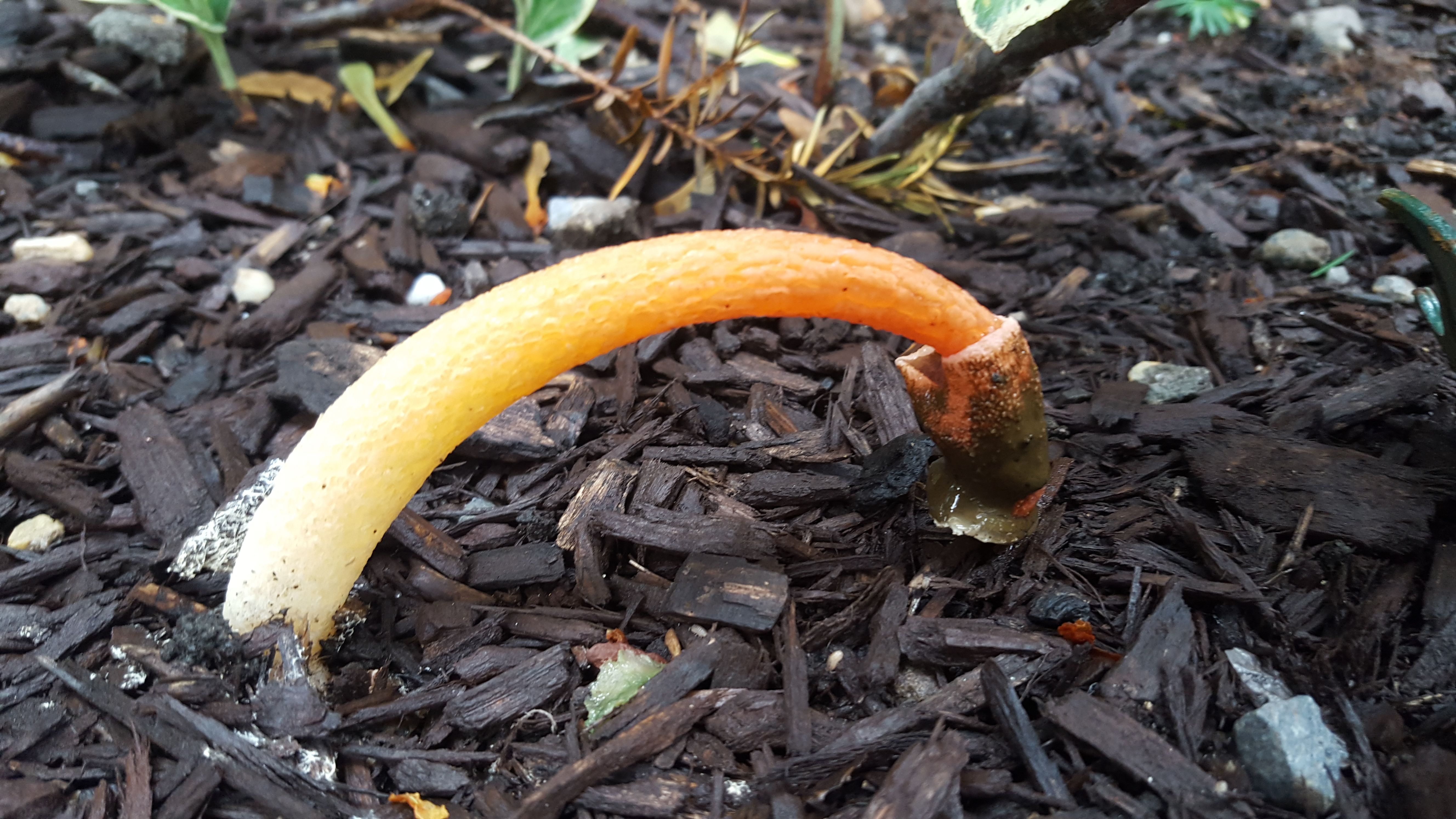
Talk about a mushroom that doesn't take itself too seriously.
The first mushroom species I wrote about on Steemit was Phallus ravenelii, or Ravenel's Stinkhorn. P.rubicundus is in the same genus, but serves as an excellent example of how different two species in the same genus can be.
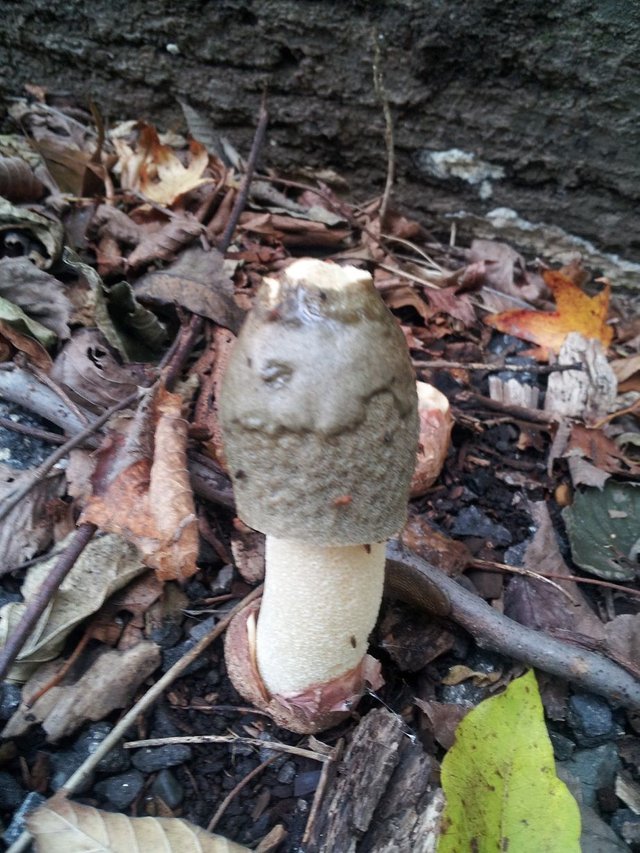
Broad strokes, P.rubicundus and P.ravenlii share the same physical layout. They grow in an egg, nestled in wood chips usually, and burst out into the world in the same absurdly penile shape. Both species have a long foamy body and a clearly distinguished "cap" or "head". Take a look at P.ravenelii to the left. That mushroom is broader all around, with a broader stem and cap. It has a very different coloration than P.rubicundus, with an off white stem and a permanently olive colored cap.
Now compare that picture to the pictures of P.rubicundus at the top of the article and below.
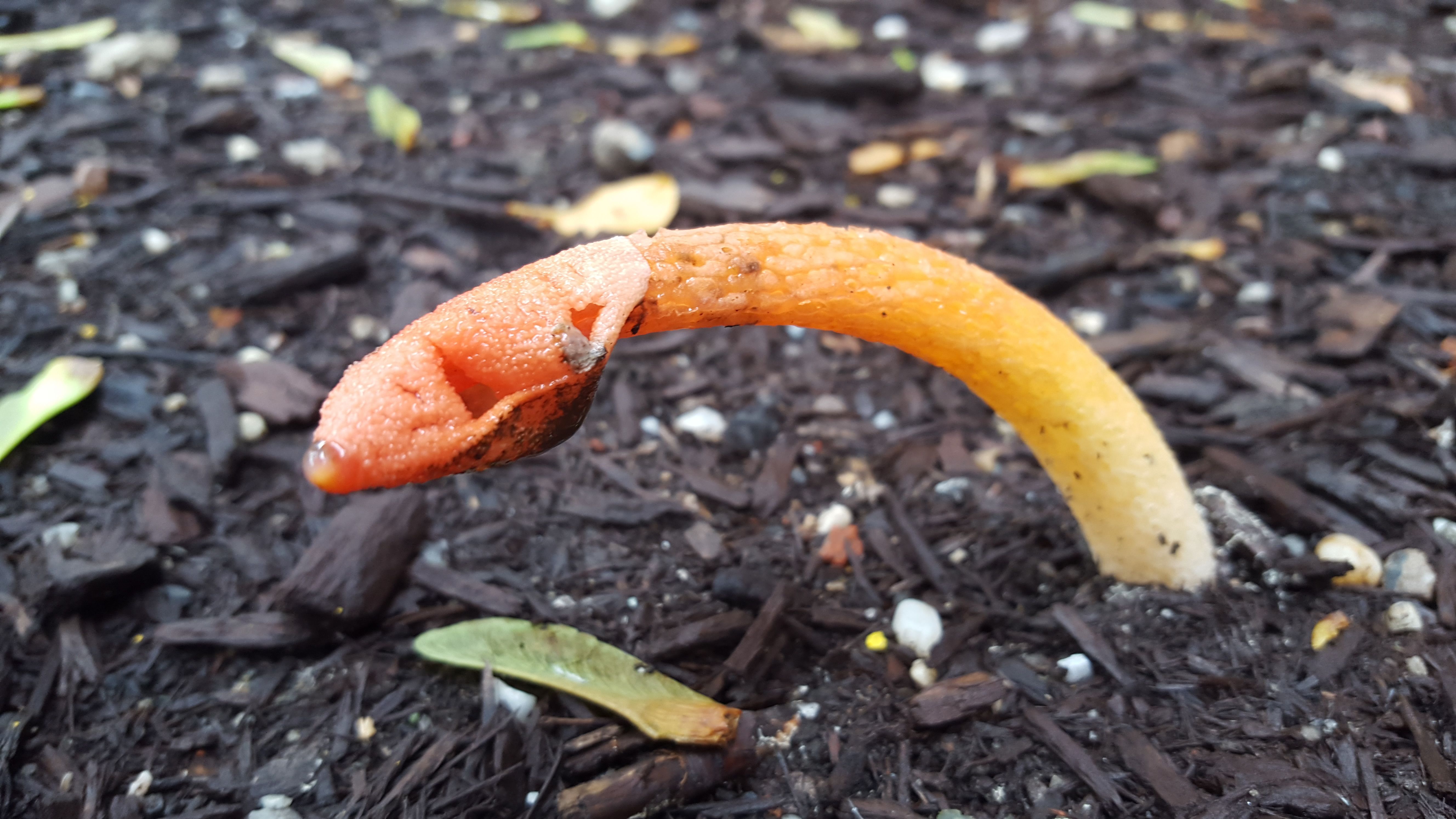
P.rubicundus has a thin stem, which starts off near white at the base, then transitions through yellow, orange and finally an orangy red near the top.
If you look at the image at the top of this post, you can see a fresher P.rubicundus, which still bears the dirt/olive colored spore slime on its cap. In the picture directly above, you can see the underlying red/orange of the cap flesh revealed, the slime having been washed away by the rain.
Let's take a closer look at the cap.
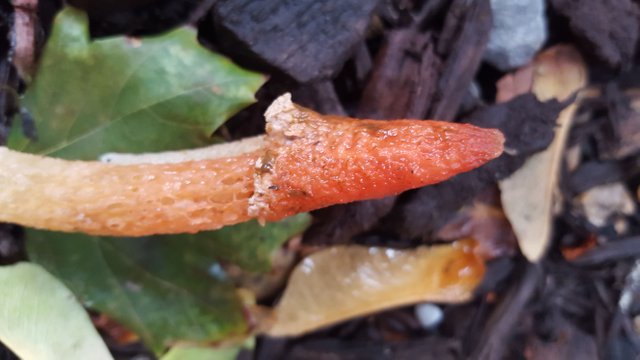
Here's another specimen with the spore slime washed off from the rain. You can see the foamy quality of the stem and cap "flesh" throughout the mushroom. However, what's important to confirm the ID of P.rubicundus is the presence of a macroscopically distinct cap structure.
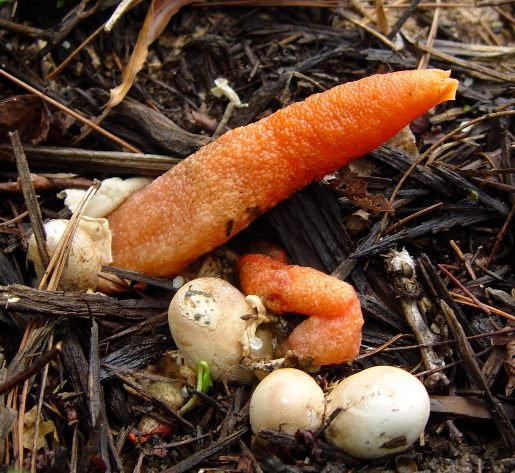
If you find a similar ridiculous/horrible looking red tentacle springing from the ground, without a distinct cap structure, you may be looking at the somehow even more horrendous
Mutinus elegans, pictured to the right. For me, the surest way to tell the difference is that where P.rubicundus looks disgusting but funny, M.elegans is just a tentacle groping out of the dirt which will haunt your nightmares.
My favorite part of finding mushrooms in the Phallus genus is bifurcating the immature eggs. I only found one this time - and it was very young - take a look.
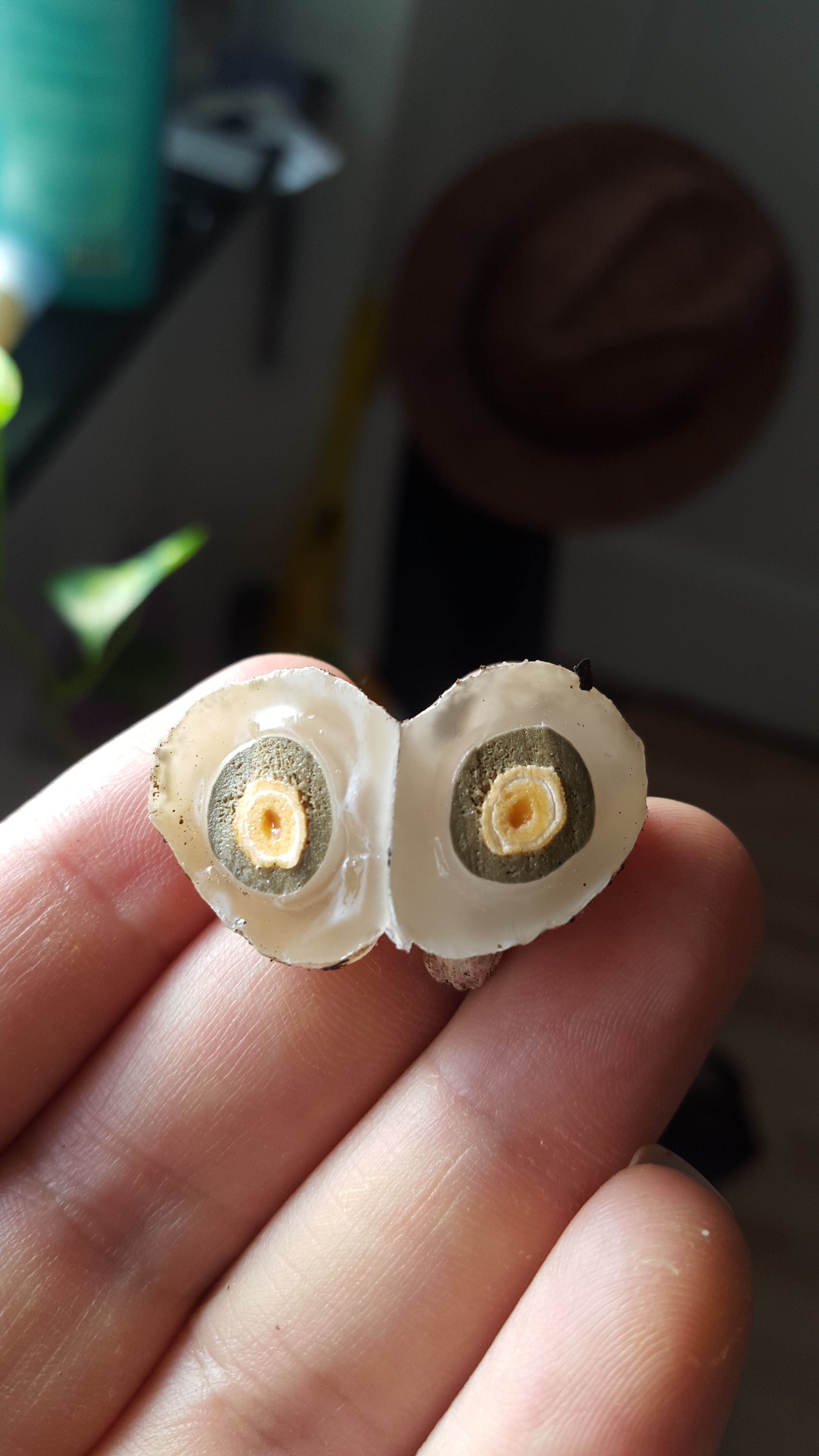
The interior of the egg holds all the future parts of the mushroom.
This one had a white skin on the outside connected to the earth via a small white tendril, like a mushroom umbilical. It looked a lot like a small, young earthball or puffball, but when you touch it, the game is given away. It was soft to the touch, like a plastic baggy filled with jello.
If you look at the picture above, you can see all of the incipient structures of the future stinkhorn inside, but far from completely developed. The center is orange and would develop into the stem and cap of the mushroom. The olive colored portion is the spore mass, which would cover the head in a grotesque slime when the mature mushroom pops out.
Around the colored portion of the mushroom is a clear, jelly like mucus - with the color and consistency of egg white. Over time, this clear jelly would disappear and the center would expand out until the egg tripled in size and developed a small cone. Once it was ready, fairly quickly, within the course of a couple of hours, the full mushroom body would burst forth, as you see in the photos above.
Like it's cousin, P.ravenelii, P.rubicundus is one of the great spectacles of the natural world - and one which you have a high likelyhood of encountering, especially if you walk around mulch or woodchips in summer after a good rain, almost anywhere in the continental United States.
Macroscopic Characteristics
Cap/Flesh/Stem - Up to 20 cm long with a distinct cap structure covered in spore slime. The cap is going to be from 3-5 cm long and, like the rest of the flesh, is very fragile, almost "foamy" in texture. Kuo says it might be smooth textured under the slime, although all I have seen have been slightly bumpy in their characteristically foamy way. The stem is hollow if cut. 1-2cm thick, at most, which is thinner than P.ravenelii.
Spore Surface - The dark, stinky slime around the cap is the spore material.
Spore Print - The same dark color as the slime, which is the spore material.
Ecology - Saprobic - They may grow by themselves, but usually gregariously, or in small, nearby groups. I usually see them in woodchips or mulch, but they can grow in meadows, lawns and other collections of small organic dead matter.
Distribution - Kuo theorizes that they have spread around much of the Continental US from the transport of mulch across state borders over many years. However they got there, you will find these mushrooms popping up, ridiculously, all over the place in the US from July through a hot September (As I have).
Other Traits - Develops out of an egg which begins as nearly round with a jello consistency, and then becomes larger, vaguely conical. Slicing the egg open reveals the incipient structures of the mushroom. Commonly mistaken for M.elegans - the primary distinction being P.rubicundus has a distinct morphological cap structure, which M.elegans lacks.
THIS POST IS NOT INTENDED FOR FORAGING PURPOSES AND TO USE IT FOR THOSE PURPOSES WOULD BE DANGEROUS. DO NOT HUNT WILD MUSHROOMS WITHOUT RELYING ON A COMBINATION OF PROFESSIONAL FIELD GUIDES, IN PERSON PROFESSIONAL GUIDANCE, OR IN PERSON GUIDANCE BY SOMEONE TRUSTWORTHY WHO HAS COPIOUS LOCAL, SPECIALIZED MUSHROOM HUNTING EXPERIENCE. FAILURE TO DO SO CAN RESULT IN GRIEVOUS PERSONAL HARM OR DEATH.
Support the @SteemSTEM and the #steemstem project - curating and encouraging quality STEM related content across the STEEMIT platform
Information Sources:
http://www.mushroomexpert.com/phallus_rubicundus.html
http://www.mushroomexpert.com/mutinus_elegans.html
https://en.wikipedia.org/wiki/Phallus_rubicundus
https://en.wikipedia.org/wiki/Mutinus_elegans
Photo Sources:
All Photos are my own, OC, except for the picture of Mutinus Elegans:
I would add that this mushroom, like many others from the same genus, have a peculiar way of spreading their spores.
The gleba of Phallus rubicundus and other Stinkhorns has a foul smell, to which flies and insects are attracted to, and after eating it they spread the spores with them.
However, the wikipedia article for this mushroom cites a study in which they found that mosquitoes that were attracted to the smell of the gleba, perished after consuming it. Which sounds counterintuitive to me.
I realize now I sort of ignored the "stink" portion of the stinkhorn experience in this post.
That's a strange effect re:mosquitos - but considering they survive on animal blood, perhaps the gleba is tasty but nutritionally incompatible. I suppose from the mushrooms point of view whether the eating bug lives or dies hardly matters as long as they get some distance away with the spore mass
I love mushrooms 🍄
I'm glad.
Excellent post about mushrooms, the photos are also very good. I love mushrooms on my steaks with cream, I also like them in salads. Resteemed
Thank you! Always happy to provide mushroom related entertainment.
I never knew that there were mushrooms that grew from egg structures like that. Very interesting as always!
There are many species which grow from eggs - and many different variants of the egg itself - however, I think the Phallus eggs are some of the most dramatic
Upvoted on behalf of the dropAhead Curation Team!
The article will be Resteemed by @dropahead Curator - Witness account of the dropAhead curation team!
Watch out for the #xx-votesplus tag!
By doing the above you will give us more STEEM POWER (SP) to give YOU more earnings next time.
Keep up the good work!
@dber got you a $1.57 @minnowbooster upgoat, nice! (Image: pixabay.com)
Want a boost? Click here to read more!
upvoted&followed, look at my photos :)
thanks for making this
Congratulations! This post has been upvoted from the communal account, @minnowsupport, by DBER from the Minnow Support Project. It's a witness project run by aggroed, ausbitbank, teamsteem, theprophet0, someguy123, neoxian, followbtcnews/crimsonclad, and netuoso. The goal is to help Steemit grow by supporting Minnows and creating a social network. Please find us in the Peace, Abundance, and Liberty Network (PALnet) Discord Channel. It's a completely public and open space to all members of the Steemit community who voluntarily choose to be there.
This post has received a 0.13 % upvote from @drotto thanks to: @banjo.